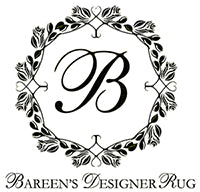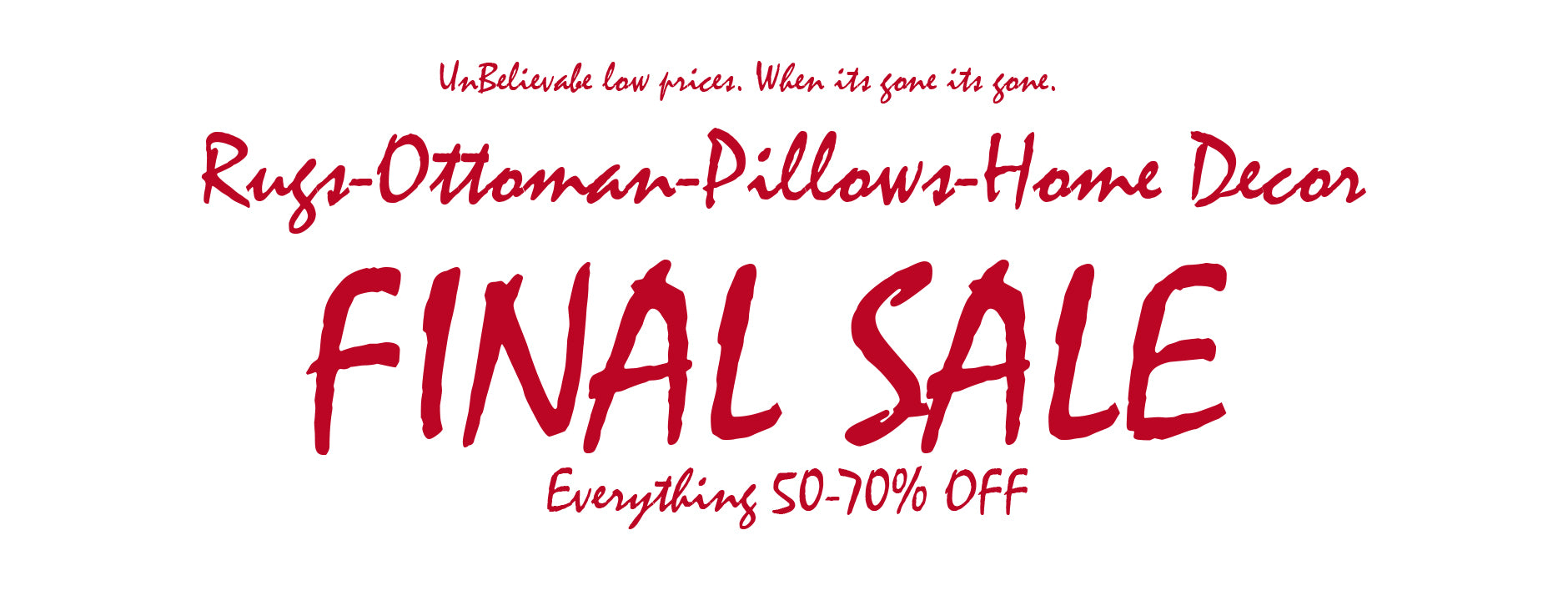COMMON RUG TERMS
Antique A rug that is at least 60 years old.
Braid The three or more stands of material, such as wool or strips of rag, that are laid over each other in a diagonal overlapping pattern before being sewn into a rug.
Chrome Dyes Synthetic, colorfast products created between the First and Second World Wars for dyeing weaving yarns.
Cotton The natural material from the cotton plant. In handmade rugs, it can be used for warp and occasionally for woof.
Curvilinear Literally curved lines. It refers to patterns with swirls, arcs and bows.
Dye The process of coloring both natural materials, such as wool, silk and cotton, and manmade fibers. May be natural — made from plants, animals or minerals — or synthetic.
Flat Weave The weft strands are passed over and under the warp strands. No knots are used.
Geometric Patterns based on simple geometric shapes such as, lines, triangles, squares and rectangles.
Hand-knotted A short piece of yarn is tied around two neighboring warp strands creating a knot on the surface of a rug.
Hand-Tufted Created without tying knots. Instead, tufts or loops of yarn are pushed through a primary backing.
Loom Structure that holds warp strands taut for weaving and knotting. Comes in various configurations: vertical, horizontal, fixed or mobile.
Nap The direction of the pile. Run you hand one way and the pile lies down. Run your hand the other way and it stands up.
Natural Dyes Coloring agents extracted from plants, animals and minerals.
Pattern The arrangement of the yarns within the backing. The handmade rug industry recognizes three classes of patterns: Pictorial, Geometric and Curvilinear.
Pictorial Refers to patterns that portray people, animals and scenes.
Pile The material (fiber) used for weaving handmade and machine made rugs. Cotton, silk, and wools are used in most handmade rugs. Machine made rugs might use nylon or polypropylene / olefin pile.
Pile Weave A short piece of yarn is tied around two neighboring warp strands, creating a knot on the surface of the rug. All pile rugs are woven with knots, but different weaving groups use different knots.
Runner A long and narrow rug designed for use in hallways, stairways and entrances. Also called a corridor rug.
Silk An expensive fiber made from the cocoon of silkworms. Due to its high price, it is not as popular as wool.
Synthetic Dyes Chemically derived beginning in the mid-nineteenth century for coloring rug yarns.
Textile Simply a woven or knit cloth.
Warp Lengthwise yarns (the ones typically attached to the loom) that form the foundation of the rug.
Weave To make rugs on a loom by interlacing warp and weft yarns. There are three classic techniques: Pile Weave, Flat Weave and Hand Tufted.
Weft The crosswise or horizontal yarns that are manipulated by the weaver.
Wool Fine, soft, curly hair that forms the fleece of sheep, in particular. The most common pile material.
Yarn A continuous strand of twisted threads of natural or synthetic material.





















